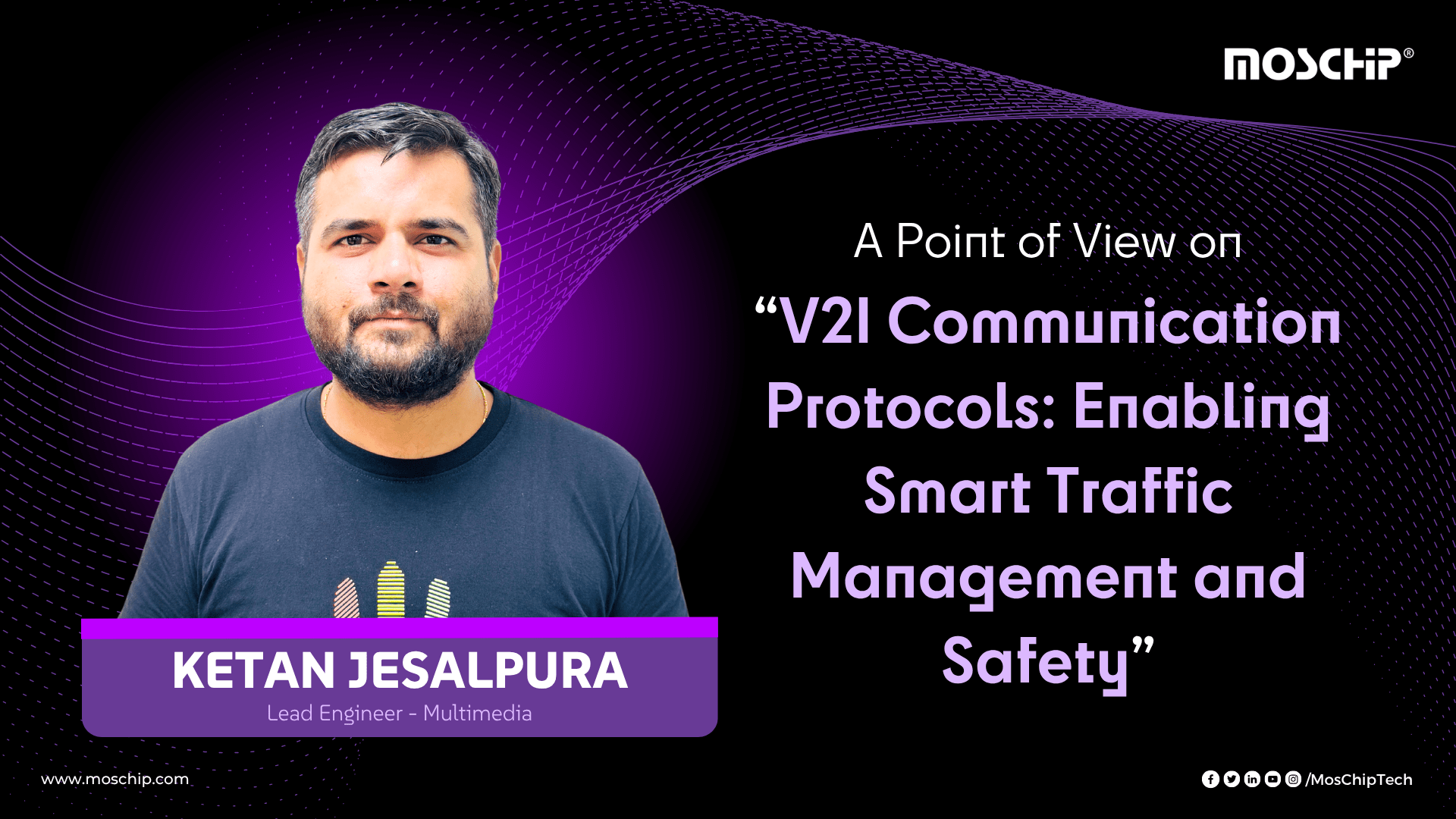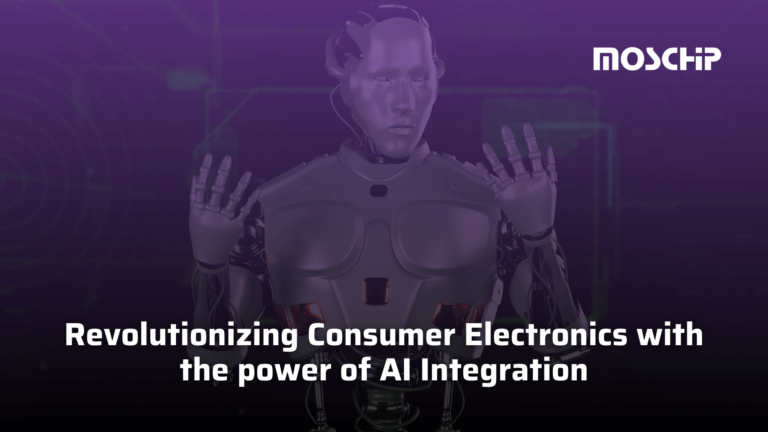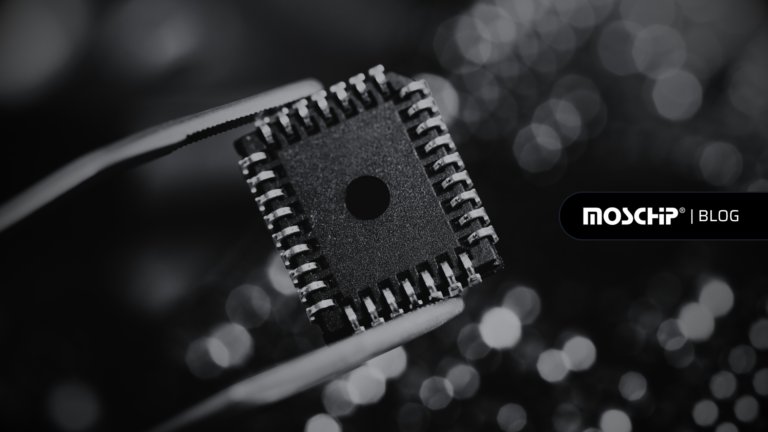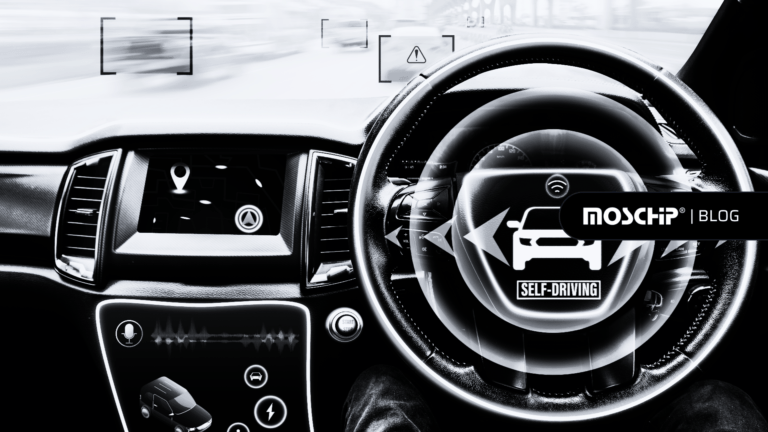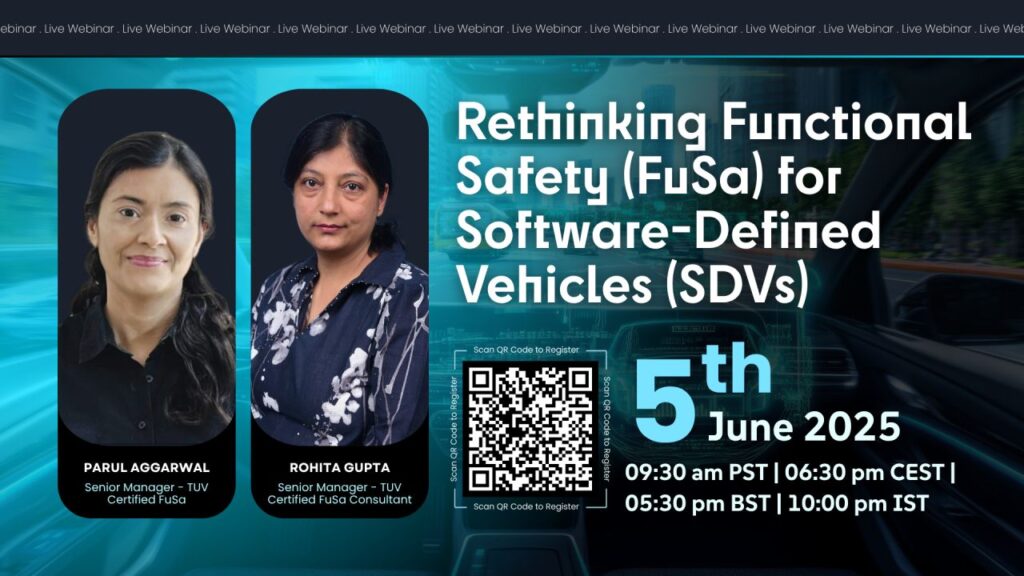V2I Communication Protocols: Enabling Smart Traffic Management and Safety – PoV
The automotive sector is transforming into a connected and intelligent ecosystem. Vehicle-to-Infrastructure (V2I) technology enables vehicles to communicate seamlessly with traffic signals, road signs, and surrounding infrastructure, enhancing safety, efficiency, and driving experience. This communication must be smooth, fast, reliable, and secure, using standard protocols and edge computing to enable safe, intelligent V2I interaction across vehicles.
In this article, Ketan Jesalpura, Lead Engineer, describes V2I communication and its importance in the modern automotive industry. Vehicles use Lidar, radar, cameras, ultrasonic sensors, and GNSS to detect nearby vehicles, road signs, signals, and obstacles. Actuators control braking, steering, and acceleration based on sensor input. To communicate with other vehicles (V2V) and infrastructure (V2I), systems rely on DSRC or C-V2X protocols. Software stacks include sensor fusion engines, real-time OS, and AI models, all supported by low-latency, high-bandwidth network infrastructure for reliable coordination.
Que: What are Software-Defined Vehicles (SDVs), and why is functional safety (FuSa) important in engineering an SDV?
Ans: V2I systems rely on both on-road and vehicular infrastructure working together in real time. On the road, you will find key components like smart traffic signals and controllers. These devices communicate using SPaT (Signal Phase and Timing) and MAP messages, typically over the SAE J2735 protocol. They essentially tell the vehicle where the intersection is, how it’s laid out, and what the signal timing looks like in real time. You will also find actuators like adaptive traffic lights and dynamic signage mounted on traffic poles. These adjust based on incoming V2I data and real-time traffic conditions.
Alongside the signals, there’s an array of wireless cameras, inductive loop detectors, and sometimes acoustic sensors placed strategically at intersections and along corridors. These monitor traffic flow, vehicle speeds, congestion levels, and even detect incidents like accidents. The data is processed locally using edge computing units, which reduces latency for making split-second traffic decisions.
On the vehicle side, modern cars are equipped with a suite of sensors: RADAR, LiDAR, ultrasonic sensors, and high-resolution cameras. These work in tandem with V2I signals to create a more comprehensive view of the driving environment. The vehicle essentially communicates to the infrastructure while simultaneously sensing the road itself.
Now, in the backend, cloud infrastructure plays a huge role. Platforms like AWS S3 store massive traffic and vehicle datasets, while tools like Apache Kafka and Spark help process the data quickly. We typically run Kubernetes to orchestrate these components so the system can scale as demand changes.
Of course, security is a top priority. We use encryption, Identity and Access Management (IAM), and network isolation to protect data. APIs and CDNs help ensure fast global data delivery. On the physical side, we build in redundancy, AC or DC backup power for roadside equipment and GIS-powered real-time positioning systems to maintain accurate navigation even under tough conditions. And to safeguard communication, we rely on cybersecurity tools like PKI, ECDSA, and TLS.
Que: How Embedded AI Plays a Role in Road Hazard Prediction?
Ans: Yes, embedded AI significantly enhances road hazard prediction capabilities. The key is ultra-low latency. For real-time road hazard detection, you need decisions to happen instantly, and that’s where embedded AI shines. Instead of processing the data on the cloud, several AI models can process the data right on the edge to assist quick decision-making. That way, even if you’re in a remote area or have no network coverage, the system can still react. And that’s critical, especially for safety-related functions.
Also, streaming raw video or LiDAR data to the cloud 24/7 would result in massive bandwidth consumption and high energy costs. Instead, embedded AI models run directly on devices using just a fraction of the power. We’re seeing optimized models that can process data from LiDAR, radar, cameras, GPS, and even vehicle telemetry in real time.
For example, convolutional neural networks (CNNs) are great at spotting physical hazards like dents, potholes, or things like that. Recurrent neural networks (RNNs) and LSTMs help detect patterns over time, like how road conditions change in certain weather. And of course, to fit these models onto embedded hardware, we use techniques like quantization and pruning to shrink them down without sacrificing too much accuracy.
Platforms like TensorFlow Lite, NVIDIA Jetson modules, and even ARM Cortex-M processors with AI accelerators are making this all possible. So today, road hazard prediction with embedded AI isn’t just possible, it’s scalable.
Que: What Makes Communication Protocols Like DSRC and C-V2X Vital for Road Safety?
Ans: Both DSRC, which stands for Dedicated Short-Range Communication, and C-V2X, which is Cellular Vehicle-to-Everything, are really at the heart of how modern vehicles can ‘communicate’ to each other and the infrastructure around them. They act as the language that lets vehicles exchange vital information on the road.
DSRC has been around a bit longer (earlier standardized in the 2000s as IEEE 802.11p) and uses the 5.9 GHz band to enable ultra-low latency communication, which is crucial for transmitting life-saving data in under 10 milliseconds. C-V2X builds on this by leveraging 4G LTE and 5G networks, which makes it even more robust and gives it the ability to extend communication beyond just short ranges. It can also tap into edge computing, which is increasingly important for real-time decision-making.
Why is this so important for road safety? Both protocols allow vehicles to broadcast what we call Basic Safety Messages (BSM) like a car’s speed, position, and braking activity. These messages help nearby vehicles and infrastructure react quickly to avoid potential collisions. Imagine knowing that a car two intersections away is about to brake hard, that’s the level of awareness these systems enable.
And it’s not just vehicle-to-vehicle (V2V). We also have vehicle-to-infrastructure (V2I), vehicle-to-pedestrian (V2P), and vehicle-to-network (V2N) communications coming into play. These expand the safety net to include pedestrians crossing the road and even coordinating with traffic signals and emergency services.
Of course, security is important here. Both DSRC and C-V2X use public major infrastructure or PKI to ensure that they are coming from reliable sources to certify messages. In this way, the driver and the vehicle can rely on the information they are receiving. In short, these protocols are important because they enable vehicles to share security-mature information immediately and safely, help prevent accidents and improve overall road safety-which is associated with mobility.
Que: Is the V2I Ecosystem Secure Enough to Handle Real-Time Vehicle Data Exchange?
Ans: V2I systems become more central to connected and autonomous driving. So, when we talk about the V2I ecosystem, we’re looking at it as part of the broader V2X framework, where vehicles are constantly exchanging real-time data with traffic lights, sensors, toll booths, and even infrastructure like smart roadways. It’s exciting because this level of data exchange can dramatically improve traffic flow, road safety, and the capabilities of autonomous vehicles.
Now, on the security side, there are challenges. The ecosystem uses well-installed equipment such as digital signature, ECDSA, and message authentication code (MACS) to ensure that the data is both authentic and tamper-proof. These are supported by standards such as PKI Infrastructure and IEEE 1609.2, which are important for the management of trust in such a dynamic environment.
Privacy is also an important focus. We use pseudo-name certificates that often roam, which helps prevent vehicles from tracking over time – this is a smart way to maintain oblivion without renouncing faith.
Of course, securing this communication isn’t just about the software side. Hardware Security Modules, both in the On-Board Units (OBUs) and Roadside Units (RSUs), handle most of the sensitive operations. Keys are either generated locally or securely imported, and everything runs through a secure boot process to protect the integrity of the firmware. Secure firmware updates are also part of the standard practices now.
Finally, to prevent common threats like replay attacks or DoS, we use a combination of timestamp validation and strict certificate policies. Lightweight cryptographic protocols help us stay within the tight latency requirements that real-time V2I demands.
To explore how V2I Communication Protocols can drive smarter traffic management and enhanced road safety, let’s connect and discuss how MosChip can support your next-gen automotive solutions.
Author
Ketan Jesalpura is a Lead Engineer at Moschip, specializing in Multimedia, Automotive, BSP, IoT, and Firmware Development. With extensive experience in embedded systems, Ketan specializes in developing innovative solutions that integrate hardware and software seamlessly. His technical leadership drives the creation of high-performance systems, contributing to Moschip's success in the rapidly evolving tech landscape.

